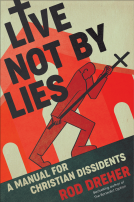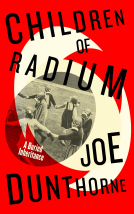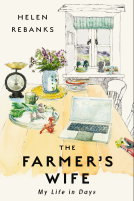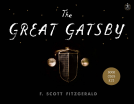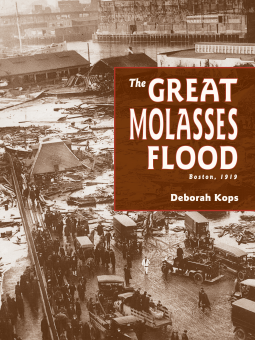
The Great Molasses Flood
Boston, 1919
by Deborah Kops
This title was previously available on NetGalley and is now archived.
Send NetGalley books directly to your Kindle or Kindle app
1
To read on a Kindle or Kindle app, please add kindle@netgalley.com as an approved email address to receive files in your Amazon account. Click here for step-by-step instructions.
2
Also find your Kindle email address within your Amazon account, and enter it here.
Pub Date Jan 06 2015 | Archive Date Jun 30 2015
Description
A Note From the Publisher
Unfortunately, this galley is not enabled for Kindle.
This is a paperback release of the original 2012 publication.
Unfortunately, this galley is not enabled for Kindle.
Advance Praise
Imagine a 40-foot wall of molasses turning a harborside neighborhood upside down.
It was a hopeful time in Boston. The worst of the Spanish influenza was over, World War I had just ended and Babe Ruth had helped the Red Sox win the World Series the previous fall. But on January 15, 1919, in Boston's North End, on a sunny, warm day, the molasses tank in the neighborhood blew. More than 2,300,000 gallons of molasses, weighing 13,000 tons, flowed down the street, uplifting houses, twisting railroad tracks and killing 21 people. Fallen elevated train tracks, dead horses, collapsed buildings and crushed cars made the areas look as though a tornado had come through. The smell of molasses in the neighborhood didn't fade until 1995, though the memory of the event has. Using firsthand testimony from the 40-volume transcript from Dorr v. U.S. Industrial Alcohol, the hearings that followed the event, Kops has done a fine job of resurrecting the story and recreating the day through third-person stories of the actual players. Had she retained some of the first-person accounts, she may have lent her narrative greater immediacy, but it is nevertheless an intriguing read. A useful map, abundant archival photographs and sidebars offering historical context complement the lively prose.
A fascinating account of a truly bizarre disaster.
Booklist
This book chronicles the catastrophic events resulting from the collapse of a large tank containing molasses in the North End neighborhood of Boston in 1919. The straightforward account centers on workers and area residents who either perished in the flood or miraculously survived. Those involved in the lengthy court case that followed also figure prominently in the narrative. Background information about the neighborhood, as well as the political activity that led to some of the speculations about the cause of the calamity, is expanded in numerous lengthy sidebars. A select number of well-placed archival photographs show the damage caused by the surge with the cleanup and rescue crews sloshing around in the aftermath. The combination of the sepia-toned photographs, the use of brown to highlight the chapter headings, and the choice of cream-colored paper gives this book a rich, elegant quality while staying consistent with the subject matter. Fictionalized accounts of the molasses flood can be found in Joan Hiatt Harlow's Joshua's Song (2001) and Blair Lent's picture book Molasses Flood (1992).
School Library JournalOn January 15, 1919, a two-million-gallon holding tank filled with molasses exploded, flooding Boston's North End near the port. In all, 21 people died in the disaster, and around 50 were injured. The sticky flood swamped the area, and cleanup proved difficult until it was discovered that seawater seemed to break it up. At that point, the judicious use of a fire boat aided the effort. Even though all the molasses was eventually gone, the smell persisted until 1995. This briskly paced recounting of the disaster focuses on the human element--the people involved, their lives disrupted and never the same thereafter. Covering not only the Molasses Flood, but the impact of Prohibition on businesses and the anarchist movement, the engaging narrative paints a very different picture of the Roaring Twenties than is typical. Of special interest, given the current national obsession with terrorism, is the number of deadly explosions set off by anarchists along the Eastern seaboard between 1919 and 1923. In a satisfying conclusion, the auditor pointed his finger firmly at the United States Industrial Alcohol Company, the owners of the tank, claiming that the company had done a poor job of building the tank and that it could withstand neither the weight of the molasses nor the pressure of the gas from fermentation. While this is an excellent study of the problems of unregulated industry, readership is nonetheless problematic. While there may be social-studies tie-ins, options for selling the title seem few. A fine, if slightly obscure, addition on a topic not previously covered in book form for this age range.
Available Editions
| EDITION | Other Format |
| ISBN | 9781580893497 |
| PRICE | $11.99 (USD) |
Links
Average rating from 11 members
Featured Reviews
 Stacy M, Educator
Stacy M, Educator
Wow! I love history, and I never knew about this. What an interesting book, and the photographs are amazing. I know in this day teacher have so much they have to pack in and do not have time to add in extra information, but one of the best teachers I ever had, would tell you little odd facts while teaching. It made you want to know more, so if you threw this information out while talking about Boston, and then had the book available in your class, I know the students would read it!
 Mandy J, Reviewer
Mandy J, Reviewer
Aimed at children, this is nevertheless perfectly suitable for adults too. Everything you ever wanted to know about the Great Molasses Flood in Boston in 1919. A fascinating story, and very well presented here, with lots of photos, a clear exposition and some personal stories to make it easier for children (and adults) to understand the human dimension. Excellent.
 Emma F, Reviewer
Emma F, Reviewer
What a thrill to discover The Great Molasses Flood! I have always loved books like this, written for children, that tell a historical story in a fascinating way, with pictures from the time to show what happened. Have you ever heard of the great molasses flood? I never did, either!
On January 15, 1919, as life was getting back to normal in Boston after World War I, and as Prohibition was becoming law across the United States, a disaster occurred that no one saw coming. A gigantic tank fifty feet high, on the waterfront, held over 2 million gallons of molasses—about 13,000 tons! This molasses was to be made into rum. During the war, molasses had been made into alcohol, and then into ammunition. Now, there was just a year to make and sell as much rum as possible before Prohibition would go into effect. The molasses in this tank would never become rum, however.
At 12:30 on January 15, the tank suddenly split open and a flood of molasses was unleashed on the city. Without warning, several houses, including a firehouse, were swept off their foundations and crushed. People found themselves in a sea of molasses—sticky, heavy molasses. Before it was all over, 21 people were dead and many more injured. And how do you clean molasses out of a city? Read The Great Molasses Flood to learn more about the catastrophe and its aftermath, including several years of investigations to determine exactly who was at fault. This is one fascinating story! After I read it, I was telling my family about the story at the supper table. All of them were intrigued, and it made for quite an interesting, lively discussion.
I was given a free e-copy of this book in exchange for an honest review.
I will be publishing this review on www.learningresourcedirectory.com in September 2015.
 Karen O, Reviewer
Karen O, Reviewer
Because I live in Boston I have heard about the Great Molasses Flood and visited the plague at Puopolo Park to mark the event. It is a cherished and unusual piece of Boston history and Deborah Kops has done a fine job of making it feel vivid and fresh. I like the sepia photographs and the lively prose. The sidebars about women's rights, Prohibition and other historical facts were fun and informative. I would have liked the author to have more fully focused on fewer of the men, women and children impacted by the flood (I think if it could have been the children it would have made the book more compelling for kids to read) but this is minor. This is a good time to publish this book since a reanalysis was done in 2014 that more fully describes the structural defects of the tank. the article in the Boston Globe noted that it was the same type of steel used on the Titanic which was "susceptible to fracture." Overall, a wonderful book.
Thank you to Netgalley for allowing me to review this book for an honest opinion.
 Dana B, Reviewer
Dana B, Reviewer
This book tells a part of history that I was not aware of. In 1919, due to faulty engineering, a huge tank of molasses in Boston burst flooding the area and killing 21 people. The story is illustrated with photographs from the event and explains the history surrounding it. Due to the impending prohibition, and the fact that the molasses was intended for making rum, lots of molasses had been recently delivered thus filling the tank to capacity when it then burst. Stories of several of the people who were there are told as well as the political situation and the trial proceedings. I received this book free to review from Netgalley.
 Sarah M, Reviewer
Sarah M, Reviewer
In January of 1919 a disaster occurred in Boston that is almost hard to imagine today. A huge tank—filled with over two million gallons of molasses—burst, damaging the elevated train tracks, lifting buildings off their foundations, and carrying pedestrians and workers into Boston Harbor. Eleven people died and forty were injured. Buildings were destroyed. Clean up took weeks, but the investigation into what happened and who was responsible would drag on for years.
Deborah Kops has written an interesting account of this bizarre accident. She spends just enough time orienting readers to the neighborhood, the people, and the times of the incident. She details the effects of the tragedy, setting them squarely in facts that help readers understand the times. For example, the ambulance drivers were women, for though World War I was over, the troops had not yet returned from Europe.
The Great Molasses Flood follows some of the children and adults involved from the time before the incident through to the years after the case was settled. Period photographs and a beautifully drawn map of the neighborhood help readers understand the details even better. Sidebars present additional information about the 18th Amendment, women's suffrage, the history of Boston's North End, and other important historical information that will help readers further understand the story.
One aspect of the book I appreciated most was the way the hearing was presented. During her research Kops waded through 25,000 pages of transcripts to bring the most interesting information about the people we'd been following. She also presented the testimony in a way that was informative about the justice system but also left readers wondering how it would all come out.
This was a truly enjoyable middle grade nonfiction read. I'd heard only a little about this incident before reading the book. I'm glad to know more about it now.
 Allison D, Librarian
Allison D, Librarian
This book will probably give me nightmares. I think the kids will love it. As popular as disaster books are, this one has a new twist that will really get their attention. I love the photos because the kids always want to know what it really looked like. The photos will show them exactly. This book will work in a public or school library, and I can see it as a great Christmas present for a kid who thinks reading is boring.
